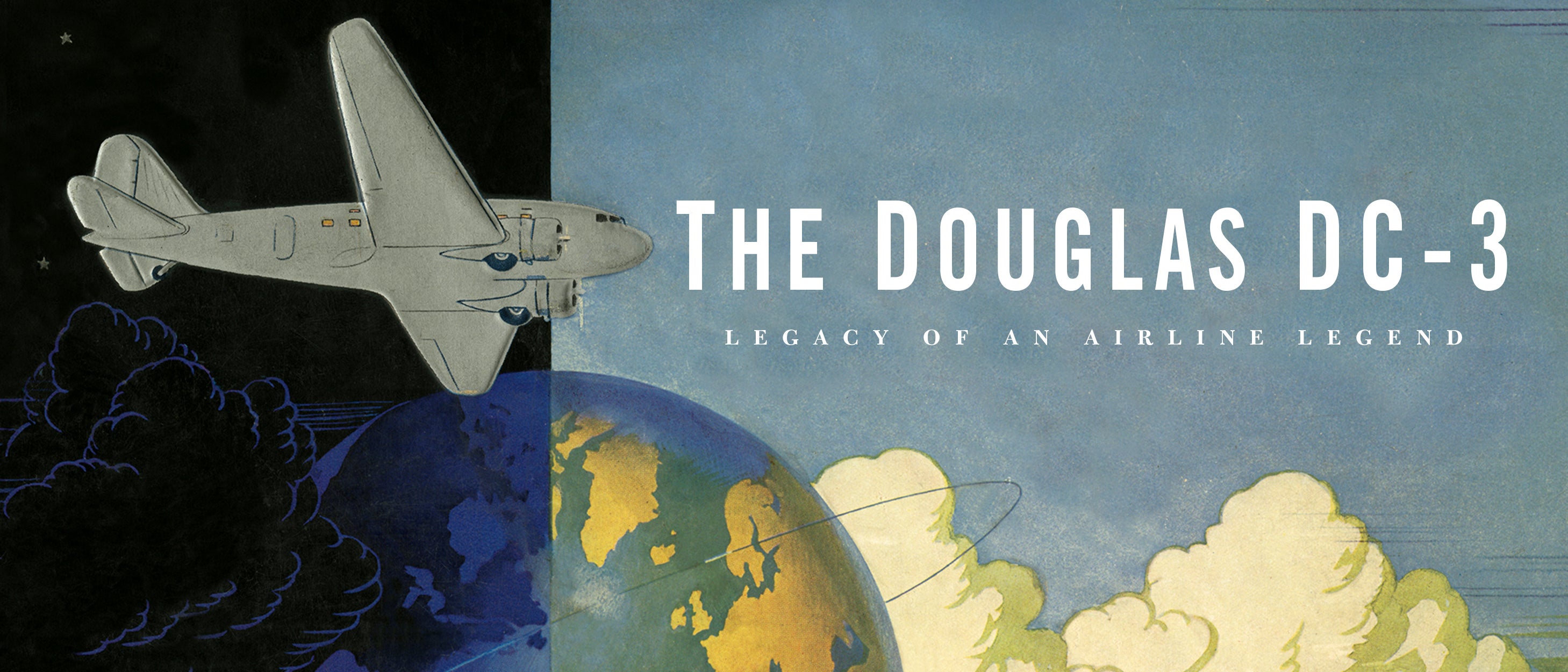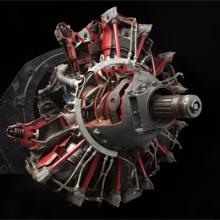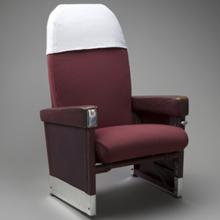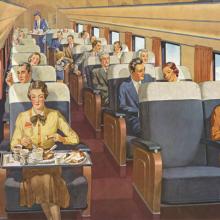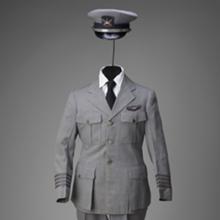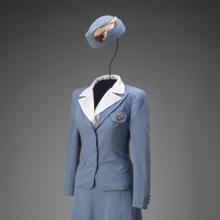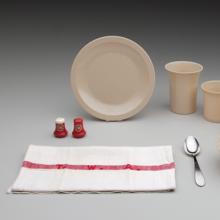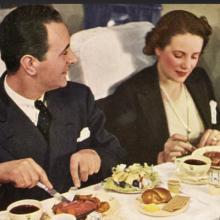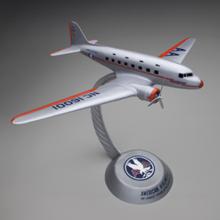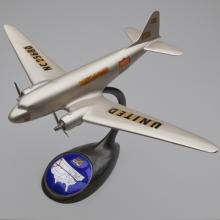The Douglas DC-3: Legacy of an Airline Legend
The Douglas DC-3: Legacy of an Airline Legend
Over the course of the 1920s, commercial aviation in North America and Europe progressed rapidly. Air routes expanded across continents, and air fleets were continually updated. Yet, maintaining financial viability proved difficult for many airlines. Airliners were relatively limited in capacity, expensive to maintain and operate, and delicate. Corrugated aluminum airliners, such as the Ford Tri-motor, were more sturdy and reliable, but were heavy and slow. In 1933, United Air Lines introduced a fast, all-aluminum, streamlined airliner, the Boeing Model 247. Often called the first modern airliner, the revolutionary aircraft set a new standard in aircraft design and was sought after by numerous airlines. However, all production was contracted for Boeing’s affiliated operator United Air Lines.
TWA (Transcontinental & Western Air), compelled to seek out other manufacturers for an improved version of the 247, approached the Douglas Aircraft Company of Santa Monica, California, with a list of requirements. What ultimately emerged was the DC-1 (DC for Douglas Commercial) prototype, and later, the upgraded DC-2 production airliner. Impressed by the performance of the DC-2, American Airlines asked Douglas to develop a larger capacity sleeper version of the DC-2. Introduced in 1936, and initially designated the DST (Douglas Sleeper Transport), the DC-3 was a larger and vastly superior airliner that would completely transformed commercial aviation within a few years of operation.
Conceived by Douglas’ leading aeronautical designer Arthur Raymond, the DC-3 incorporated numerous aeronautical advancements. These included a strong, yet relatively light, highly streamlined, all-aluminum, semi-monocoque fuselage, and an ingenious modular, high-aspect-ratio, low-drag wing design that incorporated ultra-strong spider-web-type construction. The aircraft proved aerodynamically superior, highly reliable, safe, and easy to maintain, and, for the first time, enabled carriers to make a steady profit from operating passenger services. Prior to its introduction, airlines commonly lost money unless they had lucrative airmail contracts. More than 400 DC-3s were initially ordered by most major airlines. By 1940, nearly three million passengers had flown in DC-3s, and the aircraft had collectively logged over one hundred million miles. By the end of production, 10,926 commercial and military transport versions had been built. Many are still in operation, a major testament to the aircraft’s durability. This exhibition presents the legacy of the DC-3 through objects and images from the first decade of its celebrated operation.
©2013 by the San Francisco Airport Commission. All rights reserved.
